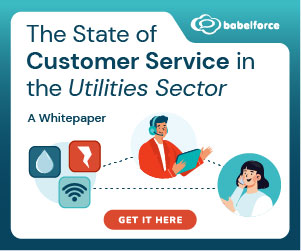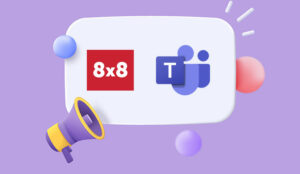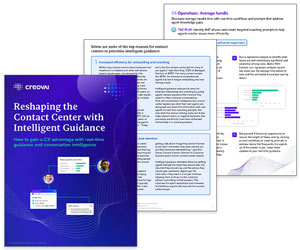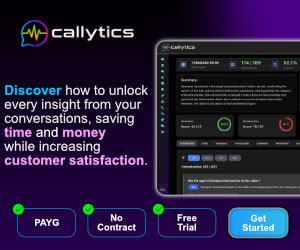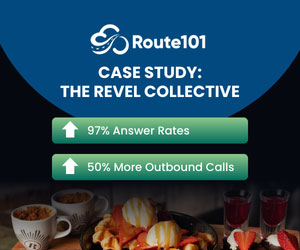We live on our phones! From banking and booking to groceries and games, mobile apps have quietly become the front door to most modern services. So, why is customer service still stuck in the queue?
While many brands have raced to adopt AI, chatbots, and speech analytics, fewer have taken the plunge into building dedicated customer service apps: tools designed not just to respond to customer needs, but to anticipate them.
Yet now over a quarter of contact centres now have one firmly on their wish list, highlighting that mobile-first customer support is no longer just a trend – it’s a real advantage.
So here’s some useful advice on how to get started…
Who Are Apps Best Suited For?
Some sectors are already seeing huge wins from customer-facing mobile apps.
If you’re in any of these, you should absolutely be exploring your options sooner rather than later:
- Banking and Financial Services – Apps are already the norm. Customers expect instant access to statements, balances, transfers, and secure messaging. Many banks now roll live chat, digital ID verification, and even mortgage applications into their apps.
- Retail and e-Commerce – Order tracking, returns, loyalty points, product guides – apps are a central hub for customers. It’s especially valuable for D2C (Direct-to-Consumer) brands where customer retention is key.
- Travel and Hospitality – Customers want to check in, choose seats, rebook, or get notified of gate changes – all on the go. An app is a must-have for airlines, hotels, and transport services.
- Personal Care Businesses – Apps streamline bookings, appointments, cancellations, reminders, and payments. Salons, clinics, or therapy centres can use them to reduce no-shows and increase client satisfaction too!
While the benefits are compelling, a smartphone app isn’t a universal fix.
Here’s where it might not deliver the ROI you hope for:
- B2B Firms With Fewer, High-Value Clients – If most of your service is done through account managers or custom integrations, an app may go unused.
- Voice-Dominated Contact Centres – Our 2024 report shows voice still dominates – with inbound and outbound calls making up 67% of contact volume. If that’s true for your audience (especially older demographics), an app may not shift much traffic.
- Complex or Regulatory-Heavy Interactions – Industries like legal, insurance, or energy might find it more difficult to simplify service journeys into an app without losing critical nuance. (However, some are successfully offering customer apps – including Ecotricity.)
What to Get Right When Rolling Out Your First App
Here’s your five-step roadmap for launching a customer service app that actually gets used – and loved!
1. Start With Journey Mapping
What are your most common contact drivers? Where do customers experience friction?
Map these journeys first. The goal isn’t to “appify” everything – just the parts that are most valuable and repeatable.
For expert advice on improving your customer journey maps, read our article: How to Improve Your Customer Journey Mapping
2. Test It Internally First
Use your own advisors and staff to pilot the app.
Can they find what they need? Do the features work as intended?
Treat it as a beta – and listen to the feedback.
3. Train Agents as App Champions
Make sure frontline staff know how to troubleshoot app queries, promote features, and feel proud of the launch.
This boosts confidence and avoids negative feedback loops.
Making sure agents champion your products and services can improve brand advocacy. For advice on this, read our article: How to Ensure Agents Love Your Products and Services
4. Promote the App Across Your Other Channels
Add Call to Actions (CTAs) across your:
- Email signatures
- Webchat windows
- IVR menus (“You can also get help faster in our app”)
- Post-interaction surveys
Adoption doesn’t happen passively. Customers need to know it exists – and why it’s worth downloading.
5. Don’t Forget Accessibility
Ensure your app meets WCAG standards. That includes:
- Screen reader compatibility
- Clear font hierarchy
- Colour contrast
- Simple navigation
Don’t leave anyone behind – excluding disabled or neurodivergent users will only harm your brand long-term.
What Are the Key Barriers Contact Centres Typically Experience?
Launching an app isn’t a small feat. There’s the design, the development, the ongoing maintenance, and most crucially – ensuring it actually enhances the customer journey rather than simply duplicating your website.
For smaller contact centres (under 100 seats), it may feel like overkill. And for sectors where transactions are complex, infrequent, or deeply personalized, a generic app might not move the needle.
But increasingly, the hold-ups seem to come from three core barriers:
- Budget pressures – 67% of contact centres cite lack of budget as the main blocker to ideal operations.
- Conflicting priorities – Tech projects often take a backseat to immediate CX fixes.
- Unclear ROI – Unlike tools with tangible cost savings (e.g. workforce management software), apps are often seen as “nice to have” rather than essential.
The Strategic Benefits of a Customer Service App
Still, with almost a quarter of contact centres actively pursuing a smartphone app, the tide is turning, and a well-built app can be so much more than just another boring medium for your customers.
It can actually become the most intuitive and native ecosystem for your business.
Here’s what you gain when it’s done right:
24/7, Frictionless Access
Apps remove the cognitive load of finding a support number, navigating an IVR, or waiting for a live chat agent.
Your customers can:
- Get help instantly via self-serve
- Raise tickets or track updates
- Schedule appointments or deliveries
For Gen Z and Millennials – the majority of today’s working-age consumers – this always-on convenience isn’t a luxury. It’s expected.
For advice on what it really takes to support your agents and customers when your doors are never closed, read our article: Top Tips for Running a Great 24/7 Contact Centre Operation
Better Service, Lower Cost
Funnelling routine queries through an app (such as order tracking, password resets, payment issues) helps to reduce inbound volume – freeing up agents to focus on complex, high-empathy interactions.
This complements a growing focus on cost per call – which our survey notes has hit a 5-year high. Any channel that lowers operational load while maintaining CX quality is worth exploring.
Push Notifications and Proactive CX
Having your own customer service app would mean you would own your notifications.
Whether it’s:
- “Your delivery is arriving in 2 hours”
- “We’ve processed your refund”
- “Service is temporarily offline – here’s what to do”
Proactive support is one of the biggest trends in CX. It reduces contact, builds trust, and makes customers feel seen.
Personalization at Scale
Once a customer is logged into an app, you can tailor their experience based on purchase history, preferences, previous tickets – even real-time context.
This feeds directly into the #1 priority metric for 86% of contact centres in 2024: customer satisfaction.
If you are looking for the key steps to a more personalized customer experience, read our article: 21 Steps to a More Personalized Customer Experience
Rich Data for Smarter CX
From click-paths to feature usage, an app provides a treasure trove of behavioural insight. This can help you:
- Identify common friction points
- Optimize FAQs and help content
- Pre-empt churn or complaints
Future-Proofing Your CX
With technologies like voice biometrics, video chat, and AI-driven predictive service now entering the mainstream, we’re heading towards hyper-personalized mobile support. The future app won’t just respond – it will anticipate.
But you don’t need to build the next Uber for customer support.
What matters is that your app:
- Solves real problems
- Feels smooth and intuitive
- Reduces demand on agents
- Makes your customer’s life easier
That’s where the ROI lives.
If you are looking for advice on the key trends, challenges, and opportunities shaping the future of CX, read our article: The Latest Emerging Trends and Strategies in CX
There Is Still So Much Opportunity for Smartphone Apps in Customer Service
Through our 2024 Call Centre Helper industry survey, we found that just 24% of contact centres currently have a dedicated customer service smartphone app in place.
Meanwhile, 27% say they’ve got one on their tech wish list… and a striking 49% still don’t have one at all.
In short: this is still a wide-open opportunity. While over half the industry hasn’t yet embraced mobile apps, a growing segment is eyeing them as a next logical step.
Compare this to tech like:
- Headsets (97%)
- Call recording (94%)
- Or even AI chatbots (42%)
You’ll notice that apps haven’t reached critical mass – but they’re no longer niche either. They’re sitting in the “early majority” zone, especially for customer-focused industries.
And with mobile usage now accounting for over 55% of global web traffic, it’s fair to ask: why haven’t more brands made the leap?
After all, it’s not about building an app for the sake of trend-chasing. It’s about showing up where your customers already are – on their phones, in their pockets, at the very moment they need you.
And if your competitors get there first, don’t be surprised when their support feels faster, smarter, and more effortless!
If you are looking for more information on contact centre technology, read these articles next:
- What Are Intelligent Contact Centres Doing Right Now?
- Why Is Video Chat Being Underutilized?
- Can AI Really Handle Customer Complaints?
Author: Stephanie Lennox
Reviewed by: Jo Robinson
Published On: 2nd Sep 2025
Read more about - Technology, Customer Experience (CX), Customer Journey, Customer Service, Personalization, Predictions, Stephanie Lennox, Top Story




